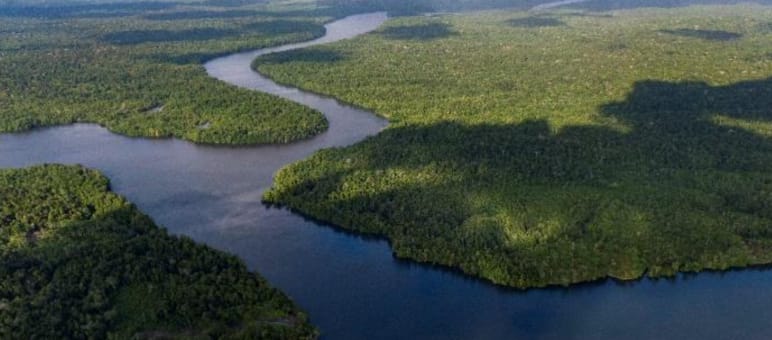Indigenous people of Indonesia’s Aru Islands save one million hectares of forest!
Indigenous people from the Aru Islands received the prestigious Rights and Resources Award on June 30, 2025, in honor of their decades-long commitment to fighting land grabbing and environmental destruction.
We congratulate the #SaveAru movement, especially the Jargaria people, on receiving the Rights and Resources Award!
Other award recipients are the Xukuru do Ororubá Indigenous Collective from Brazil and the Nashulai Maasai Conservancy from Kenya.
When viewed from above, the Aru Islands, located off the coast of Papua, appear as a single forested area. The archipelago comprises more than 800 islands, separated only by narrow straits. According to data from Forest Watch Indonesia, 83 percent of these islands are covered by primary forest and mangroves — making them unique in Indonesia.
The preservation of these forests is the result of decades-long efforts by the Indigenous people of Aru, who have resisted constant threats from corporations.
Their struggle is deeply rooted in their culture, identity, and sense of community, with elders, women, and youth all playing equally important roles. They adhere to the principle of shared responsibility for protecting both land and sea. The #SaveAru movement has become a role model for other communities.
Our partner organizations Urai Uni, Forest Watch Indonesia, and Rainforest Rescue are all part of #SaveAru.
#SaveAru
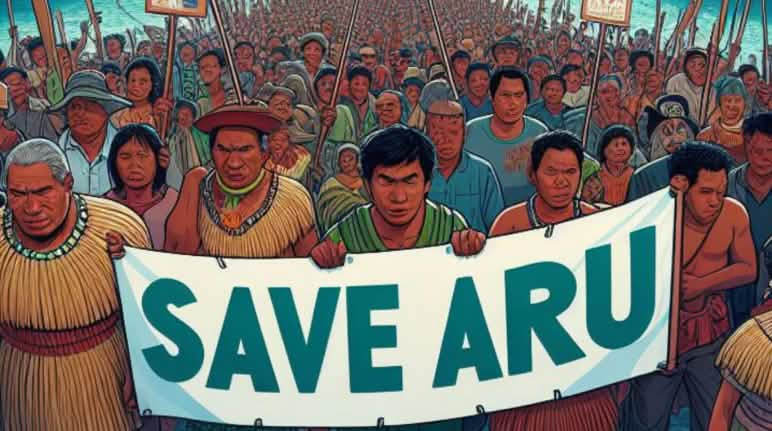
In 2012, the #SaveAru movement halted the establishment of a 350,000-hectare oil palm plantation planned by the Menara Group.
In the same year, Indigenous people successfully opposed four companies belonging to the Jhonlin Group, which aimed to develop projects on a total of 61,560 hectares in the south of the Aru Islands.
In 2013, the community blocked the company Wuana Sejahtera Abadi (WSA), which sought to harvest tropical timber from a 54,560-hectare rainforest concession.
In 2014, the movement stopped the development of 481,403 hectares of sugar cane plantations proposed by 28 companies in the Menara Group; 549,141 hectares of oil palm, sugar cane, and sago plantations by the Nusa Ina Group; and 351,832 hectares of sugar cane, palm oil, and rubber plantations by 15 companies in the Aru Manise Group. Further information can be found in the Forest Watch Indonesia fact sheet (in Indonesian).
The video “The Warden of Jargarian Forest” from our partner Forest Watch Indonesia documents the community’s campaign and daily life in a 14-minute film (with English subtitles).
In 2022, #SaveAru resisted a new logging permit. That year also marked the launch of a successful campaign against a Melchor Group project targeting nearly 600,000 hectares of mangrove forest for carbon credits. Since then, Rainforest Rescue has been a member of #SaveAru. We reported on the trade in carbon credit certificates and the threats facing the Aru Islands.
Since 2024, #SaveAru has been working to prevent the Jhonlin Corporation from building a 61,567-hectare cattle ranch.
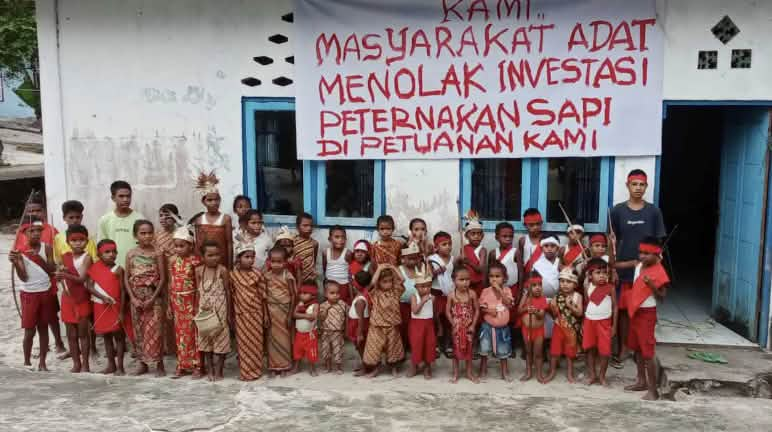
About the project with our partner Urai Uni
In addition to resisting corporate land grabbing and deforestation, Urai Uni is prosecuting cases of illegal logging and, with our support, replanting degraded areas.
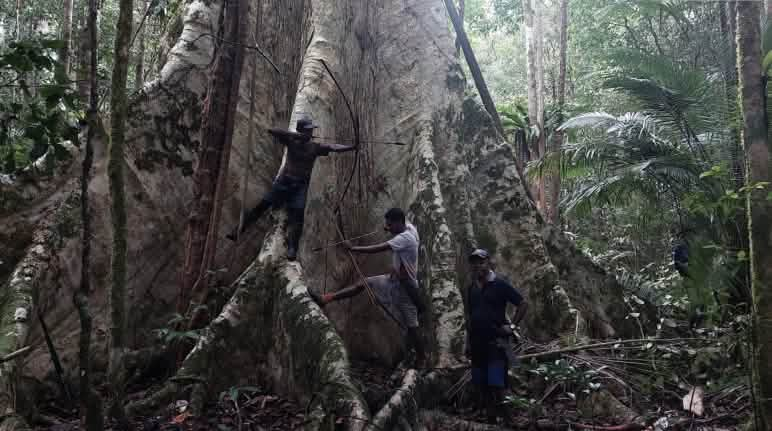
The land area of the Aru Islands is 856,300 hectares (8,563 km2), of which 550,000 hectares are lowland rainforest, 156,000 hectares mangrove forest, 53,000 hectares coral reefs, 22,000 hectares savanna, 19,000 hectares seagrass meadows.
This page is available in the following languages:

Supporting rainforest defenders
Rainforests are in particularly good shape wherever Indigenous people live and local communities are committed to conservation.
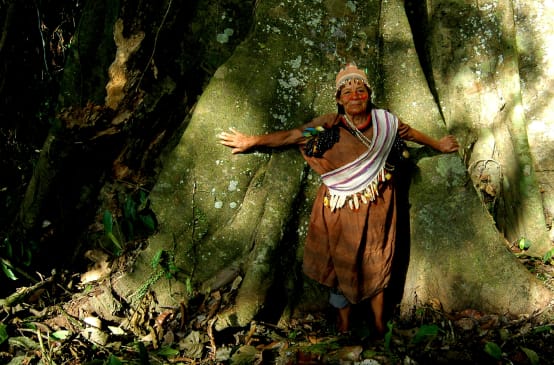
A better way to protect biodiversity: strengthening indigenous rights!
In December 2022, the UN Conference on Biological Diversity will rule that 30 percent of the planet’s surface should be protected worldwide by 2030 – a problematic plan.
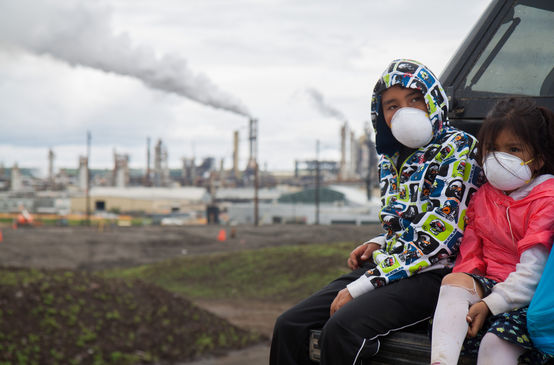
Carbon credits
A plethora of offsetting schemes say we can protect the climate without having to cut our emissions – but they are too good to be true.


